All About Flat Washers
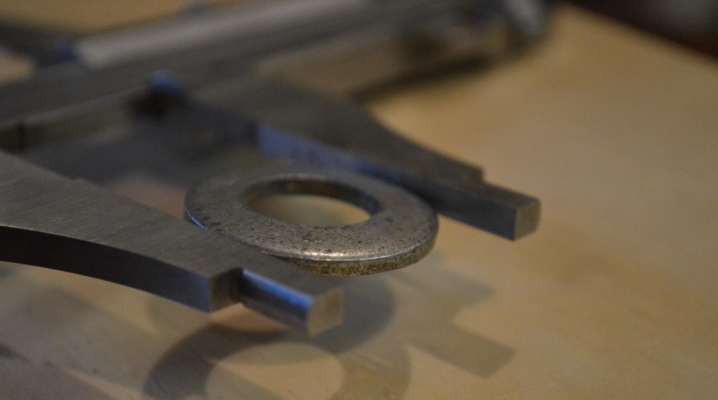
In the process of using bolts, self-tapping screws and screws, sometimes there is a need for additional elements that allow you to tighten the fasteners tightly by applying the necessary force, and to be sure that the head of the fastener does not fall into the surface. To accomplish all of these tasks, a very simple yet effective piece was created called a washer. Knowing the features and varieties of this product, you can skillfully use it, achieving maximum results in your work.
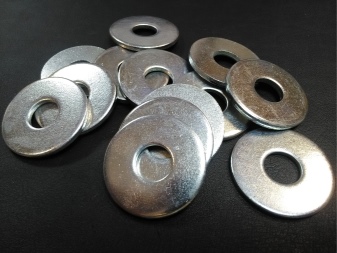
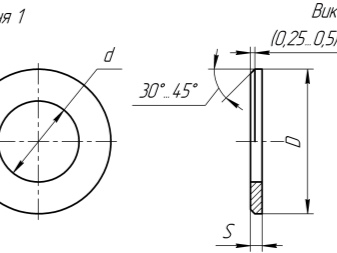
Description and purpose
When working with fasteners, a number of difficulties arise from time to time, which were solved only with the advent of washers. With a small metal flat disc with a hole in the center, the technician can avoid:
- spontaneous unwinding of parts;
- damage in the process of screwing fasteners;
- insufficient tight fixation of a bolt, screw or self-tapping screw.
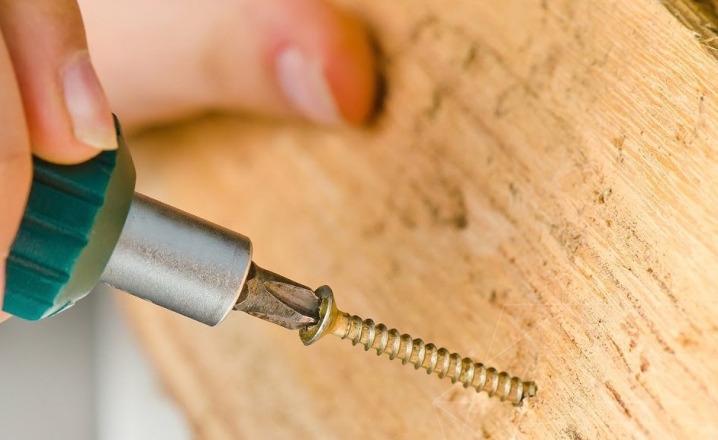
Thanks to the creation of the washer, the name of which comes from the German Scheibe, it was possible to obtain more complete control in the process of screwing the fasteners and obtaining a reliable fixation.
Despite the simplicity of the design, it is the washer that makes it possible to increase the clamping surface, and in some cases to make the connection of parts more dense. Due to the breadth of application of this product, manufacturers have taken care that the diameter of the inner hole is different.
Flat washers can be made of various materials, but their quality remains unchanged, which is controlled by GOST 11371-78. On sale you can find this product in two versions:
- without chamfer - the washer has the same width over the entire surface;
- beveled - there is a 40 ° bevel to the edge of the product.
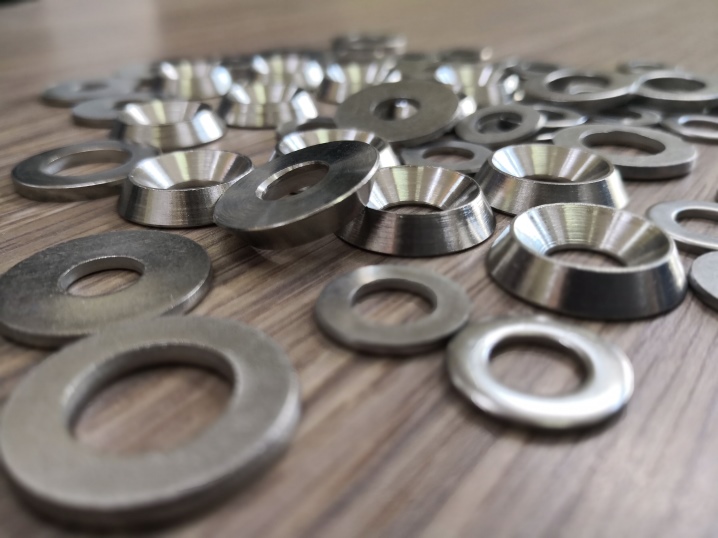
Depending on the application, you can choose between simple washers or reinforced washers that can withstand heavy loads. This option is successfully used in light and heavy industry. The most popular uses for washers are:
- shipbuilding;
- mechanical engineering;
- assembly of agricultural machinery;
- production of machine tools for various purposes;
- construction of oil mills;
- work with refrigeration equipment;
- furniture industry.
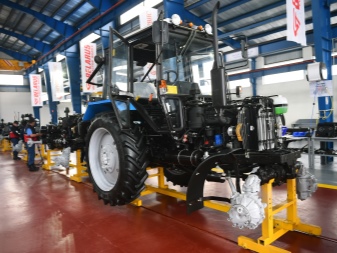

Since there are quite a few options for where the washers can be used, it is important to be able to correctly select the varieties in a specific situation, otherwise the connections will be of poor quality, which will entail a lot of negative consequences.
To understand what washers are needed for what, it is important to know the technical characteristics of each product variant.
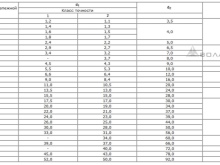
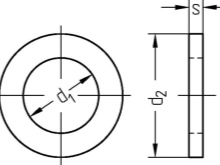
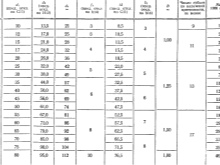
Features of production
To obtain flat washers, you can use bar or sheet material, which is sharpened with the necessary tools. In the process of creating products, they can undergo heat treatment, which ultimately gives stronger and more reliable parts. The best option is considered to be materials on which a protective layer has been applied - their service life is much longer. One of the important points is the galvanizing procedure, which can be carried out in two ways.
- Electroplated - a thin layer of zinc is applied to the washers due to the action of the chemical, which makes it possible to obtain a smooth product with an even coating.
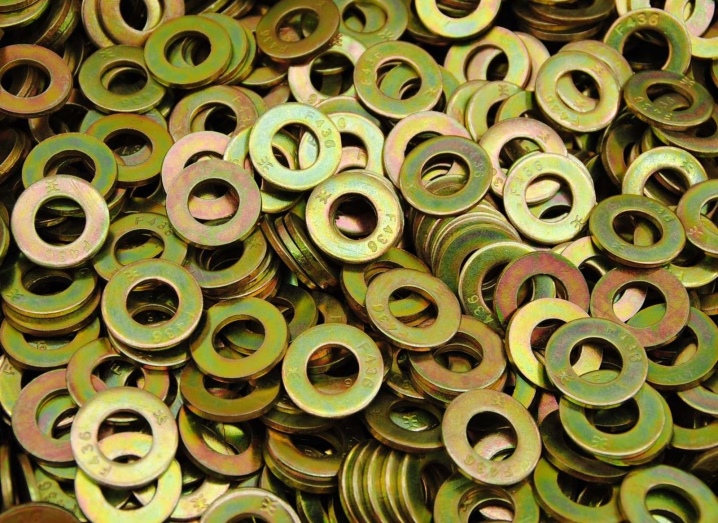
- Hot dipped galvanized - the most popular method using which it is possible to obtain high-quality washers. The process consists of product preparation and galvanizing. To make the coating even, all parts are degreased, etched, washed and dried.After that, they are dipped in hot zinc solution, which gives the parts a protective layer.
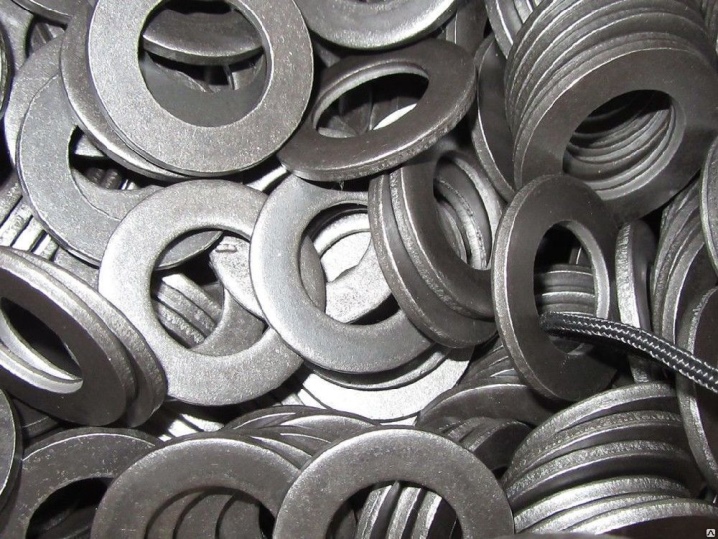
If we are talking about aluminum washers, then they are treated with yellow chromating, which prevents the metal from deteriorating under the influence of corrosion. For best results, the washer blanks are washed, then etched, washed again and chrome applied, and then washed again.
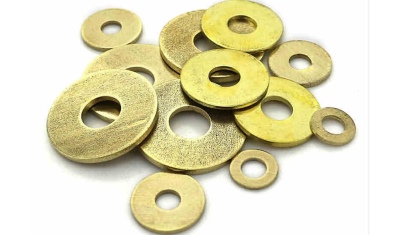
Varieties
The appearance of washers made it possible to be confident in fasteners with the help of self-tapping screws and screws, therefore these products are widely used in various industries. Due to its great popularity, many varieties of this part have appeared:
- locking - have teeth or paws, thanks to which they allow fixing the fasteners, preventing them from spinning;
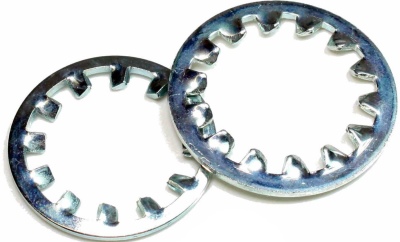
- oblique - allow you to level the surfaces, if necessary;
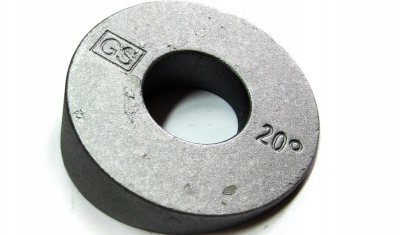
- multi-footed - have a larger number of legs, which allows you to maximize the locking properties of the product;
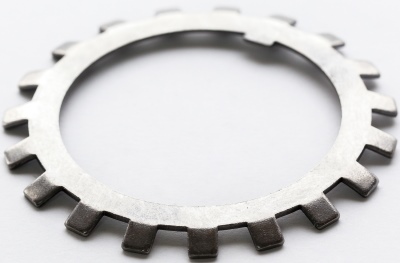
- grower - split washer, has ends in different planes, which makes it possible to fix the details as much as possible;
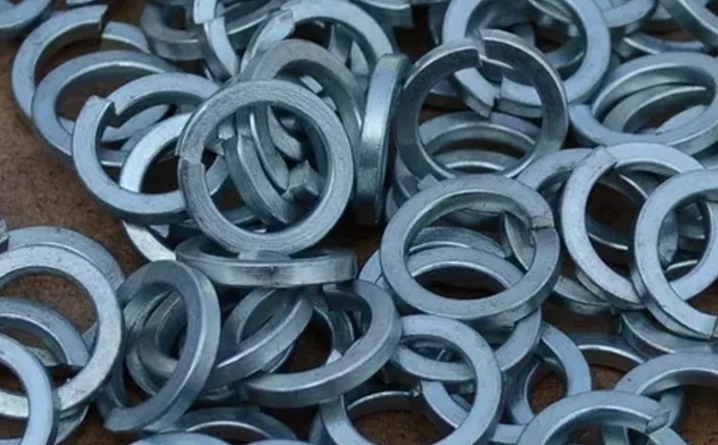
- quick-detachable - has a special design that makes it easy to put on and take off the washer, thanks to which it is possible to prevent axial displacement;
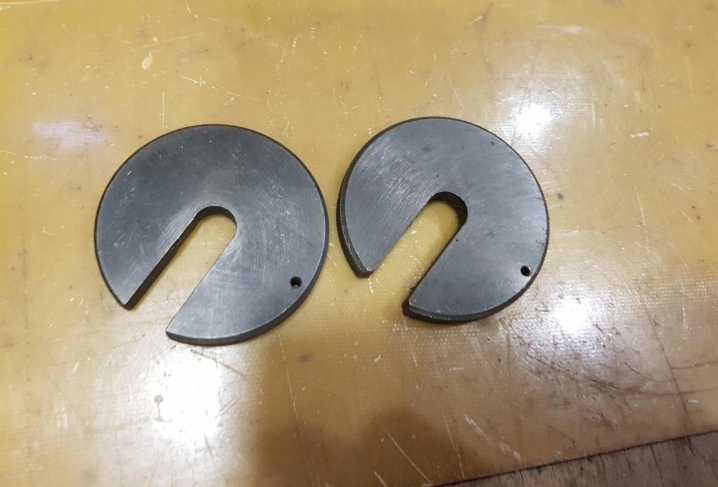
- disc-shaped - allow you to damp shocks and high pressure in a confined space;

- toothed - have teeth that allow springing, thereby additionally pressing the fasteners to the surface.
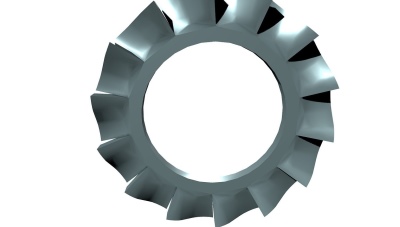
If we consider the variety of washers in more detail, you can notice a difference in some criteria:
- diameter - external indicators of diameter are usually not so important, and internal dimensions can have the following dimensions: 2, 3, 4, 5, 6, 8, 10, 12, 14, 16, 18, 20, 22, 24, 27, 30, 36 mm or more;
- width of fields - washers are divided into wide and narrow varieties;
- the form - flat version, corresponds to GOST 11371 or DIN 125, this option is the most common; flat increased corresponds to GOST 6958 or DIN 9021, this is a reinforced washer due to longer fields; grower room complies with GOST 6402 or DIN 127, also called spring; quick-release locking device conforms to DIN 6799; square washers, which can be wedge-shaped, corresponding to GOST 10906-78, or square for wooden products, corresponding to DIN 436.
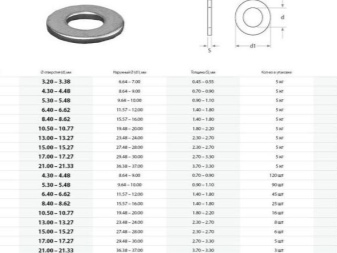
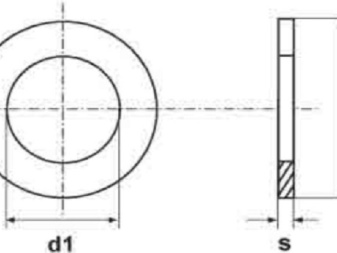
Washers markings allow you to more quickly find the right type and select it for a specific material and type of work.
All normal washers must meet quality requirements, therefore, for most of them, GOSTs are provided... There are quite a lot of washer options, and the number can be replenished, therefore it is important to study the classifications and correctly select additional products for fasteners.
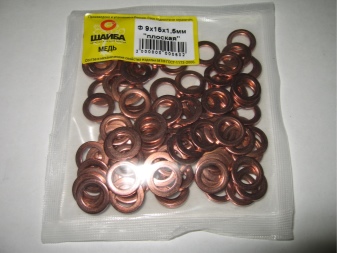
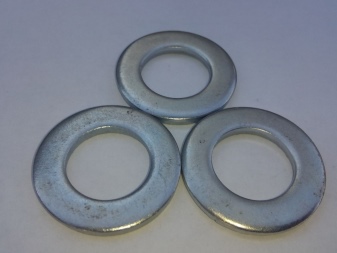
Materials (edit)
Various materials can be used for the production of washers. The most demanded are:
- carbon steel;
- alloy steel;
- stainless steel;
- brass;
- copper;
- plastic;
- wood;
- cardboard;
- rubber.
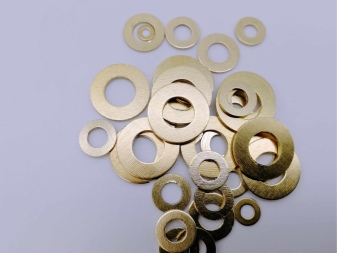
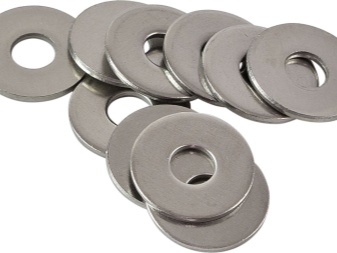
The coated steel washer, as well as galvanized varieties, are the most demanded parts, as they have good strength and resistance to various influences. Plastic options are considered a good alternative, as there is no need for additional processing during the production process.
Nylon washers help protect metal fasteners and enhance their retention.
By using different materials, you can select parts for different areas and achieve the best result.
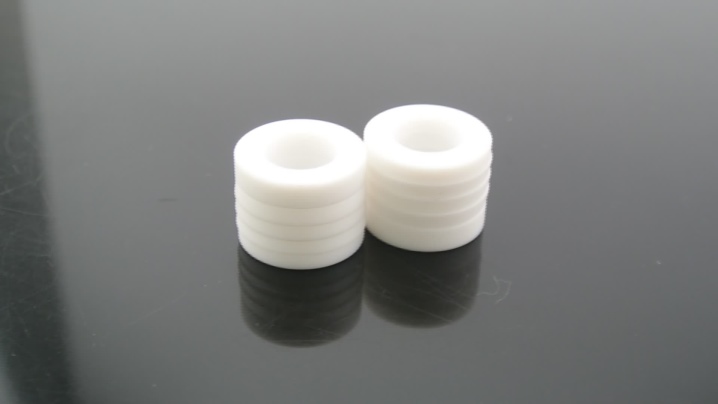
Dimensions and weight
The use of washers has its own characteristics and nuances, therefore in some cases it becomes necessary to know the exact size and weight of the product. To navigate these indicators, you can use the table in which the parameters are indicated for 1 piece:
The size | Diameter 1 | Diameter 2 | Weight 1000 pcs., Kg |
М4 | 4.3 | 9 | 0.299 |
M5 | 5.3 | 10 | 0.413 |
M6 | 6.4 | 12 | 0.991 |
М8 | 8.4 | 16 | 1.726 |
M10 | 10.5 | 20 | 3.440 |
M12 | 13 | 24 | 6.273 |
M14 | 15 | 28 | 8.616 |
М16 | 17 | 30 | 11.301 |
M20 | 21 | 37 | 17.16 |
M24 | 25 | 44 | 32.33 |
M30 | 31 | 56 | 53.64 |
M36 | 37 | 66 | 92.08 |
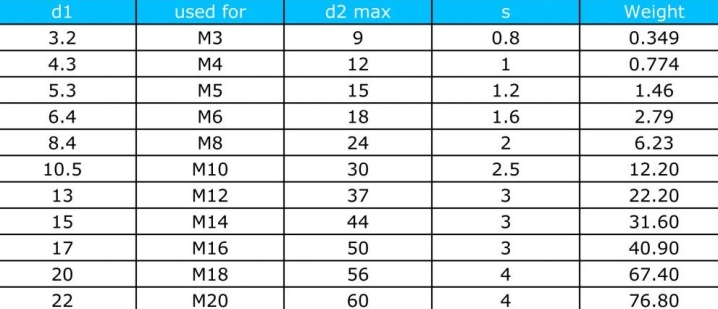
The diameters and weights of washers of different sizes differ significantly from each other, therefore it is important to pay attention to this.In addition to this table, there are data on weight indicators for light, normal, heavy and extra heavy washers. For some types of work, these values will be especially important, therefore it is worth paying attention to the marking and other characteristics of the washers in the process of working with them.
See below for an overview of the different types of washers.













The comment was sent successfully.